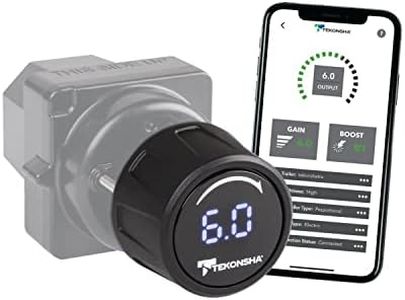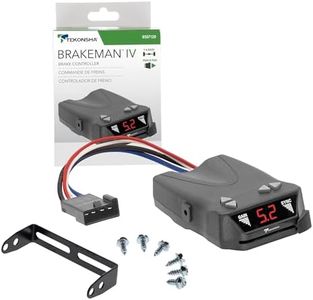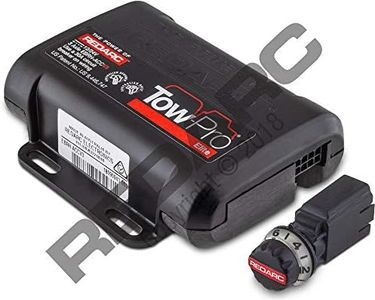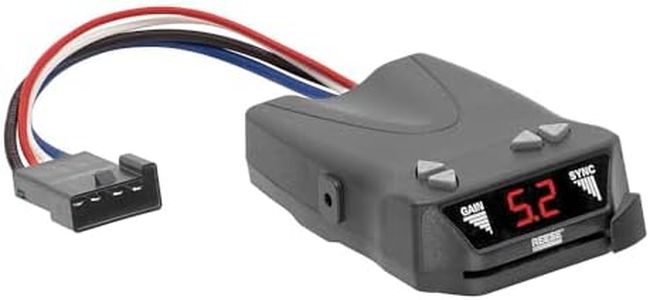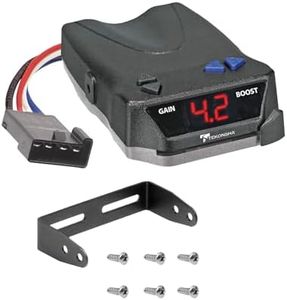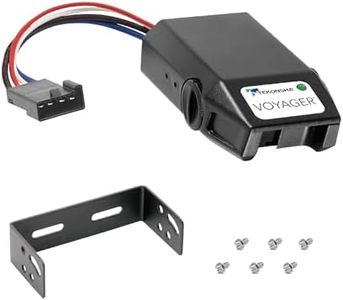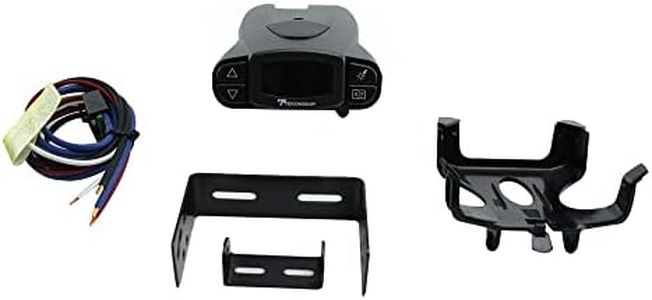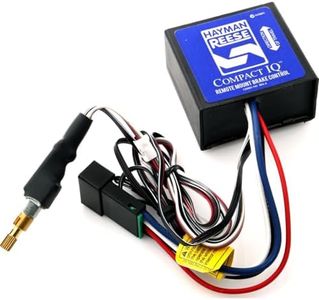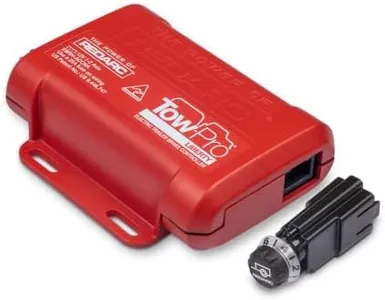We Use CookiesWe use cookies to enhance the security, performance,
functionality and for analytical and promotional activities. By continuing to browse this site you
are agreeing to our privacy policy
10 Best trailer brake controllers
From leading brands and best sellers available on the web.Buying Guide for the Best trailer brake controllers
Trailer brake controllers are essential devices for anyone towing a trailer with electronic brakes. They help synchronize the braking of the trailer with the braking of your towing vehicle, making towing much safer and more manageable. When choosing a trailer brake controller, it's important to consider your towing needs, the type of trailer you have, and how much control and automation you want. Understanding the main features will help you make an informed decision that matches your vehicle, trailer, and level of experience.Type (Time-Delayed vs. Proportional)This spec refers to how the brake controller activates the trailer brakes. Time-delayed controllers apply a pre-set amount of power to the trailer brakes whenever you apply your vehicle's brakes, regardless of how hard you press. Proportional controllers use sensors to match the braking force of your trailer to how hard you're braking in your vehicle, providing smoother and more balanced control. For occasional, light towing and simplicity, a time-delayed controller might be enough. For frequent towing, heavier loads, or added safety, a proportional controller is usually the better choice because it reacts more naturally for various driving situations.
Number of Axles SupportedThis tells you how many axles on your trailer the controller can manage brakes for. More axles (for example, two or three) mean the trailer is larger and heavier, requiring more braking power and more advanced controllers. Match the controller’s supported axles to your trailer: if you have a trailer with only one or two axles, you don’t need a controller that supports more than that. But future-proofing may be helpful if you plan to tow bigger trailers later.
Mounting OptionsMounting options describe how and where you can install the controller in your vehicle. Some models need to be hardwired under the dash, while others offer plug-and-play or even wireless operation. If you want a cleaner install and don’t often need to swap vehicles, hardwired options work well. If you want flexibility or plan to move the controller between vehicles, look for plug-in or portable units.
Adjustability and ControlsAdjustability is about how much you can customize the braking response. Some controllers offer simple knobs or buttons for setting power and sensitivity; others have advanced displays and fine-tuning. The ease of adjusting settings while driving and the clarity of the display can be a big deal, especially if you tow different trailers or drive in varied conditions. Think about how much control you need and your comfort with making adjustments while towing.
Display and AlertsThe display shows important information such as braking power, connection status, and any faults or warnings. Some displays are basic LEDs, while others offer digital or even backlit screens for night use. Clear and visible alerts matter for safety, helping you spot issues instantly. Consider if you want a simple light or a detailed read-out, and pick a display type that’s easy for you to see in your driving position.
Compatibility and Wiring RequirementsThis refers to how the brake controller connects with your vehicle’s electrical and braking systems. Some newer vehicles have a built-in brake controller connector, making installation much easier, while others may require more wiring work. Make sure the controller matches your vehicle type, especially if you drive a newer or less common model. If you do not want to tackle complex wiring, stick to models known for easy setup, or consider professional installation.
